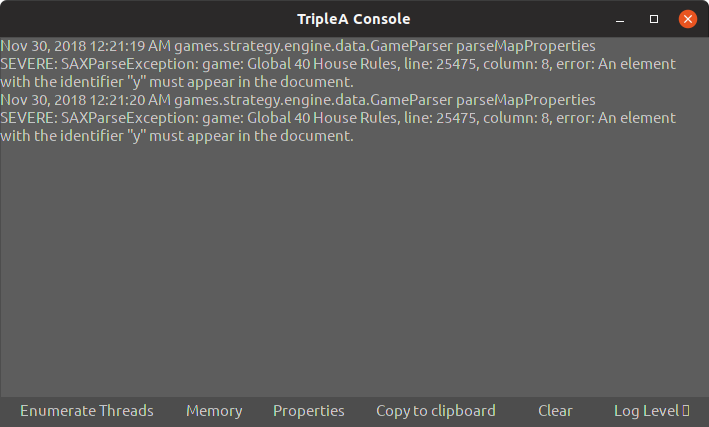

Baseelements xml error code#
If the AJAX code gets a response, an FMP URL is called that references the current file and triggers a script to hand off the response and write it to a field. Our script sets the necessary HTML javascript and run in our web viewer, then we will wait for a result. What we care about is the javascript doing the work and handing the result back to FileMaker. Since there is no HTML returned that we need to look at, this can be performed in a web viewer that is off to the right of the visible portion of our layout. The values we set in our fields get substituted into the necessary javascript via our script, and we use a web viewer to render our HTML and run the javascript. To do so, we will select the appropriate Content Type for the data we are submitting, “application/json” and “text/xml” respectively. That will make up the entirety of the request. The other two will send JSON and XML as the entire POST request, with no other parameters. First is the familiar key/value pair query string, with the content set to text/html. We have three records in this example, to demonstrate three different types of data we will send as the payload. Put the URL in the “Form Action” field in the sample database in order to get started. You can use RequestBin () to create a URL that you can use in the example file in order to inspect how the HTTP request is received by the web server. By substituting in our values into the HTML used to perform the request, we can easily reuse this code for lots of different purposes. In the example file, we use some rather straightforward Javascript (no jquery or other dependencies) to create our request and return whatever response we get as a result, and log that in our database. It may also work in WebDirect, however the method we use for returning information via a FMP url will not work in WebDirect, but could use some custom web publishing to get similar functionality. Using Javascript to handle our request allows us to control setting the HTTP header as well as submitting the content in other formats, such as JSON or XML, instead of the commonly used key/value pairs that get submitted as text.įurthermore, this method does not use any plugins, so will also work in FileMaker Go. Some third party web services may require specific headers be set in order for them to work properly. I say “some” support because you have no control over setting http headers or other attributes as part of the request. Why do this at all?įileMaker 13 introduced some support for using this request method (via httppost) with the “Insert from URL” script step. As opposed to other methods for getting data back from a web script, this allows us to continue working while the script works in the background.

This is the object used by javascript to request and return information within a web page without reloading the entire page.įor our purposes, the asynchronous aspect is important to us. Some time in the 90s, microsoft introduced support for something called XMLHttpRequest, or XHR. Despite the name, the use of XML is not required. What is AJAX?ĪJAX stands for Asynchronous Javascript and XML. Using POST, you can get arbitrarily large amounts of data submitted without relying on the URI string length. The main difference between these two methods are that GET will submit all data as part of the URL, whereas POST will enclose the data as part of the message body instead of the location. These are specified in an HTML form as an attribute of the “form” element.

There are several others that exist, but GET and POST are the most common. POST is a http method of submitting information to a web server.


 0 kommentar(er)
0 kommentar(er)
